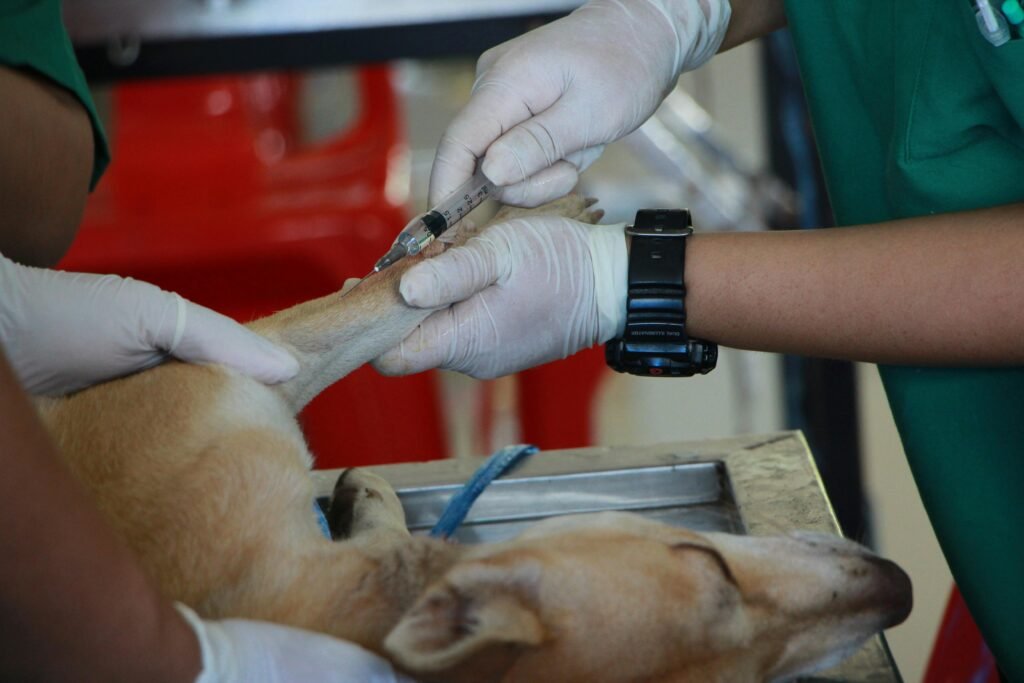Parvo Symptoms in Dogs: Why Is My Dog Vomiting and Not Eating?
1. What is parvo virus
If you have ever searched “why is my puppy vomiting and not eating”, you are not alone. It is one of the most common questions from worried dog owners and sometimes the answer is something far more serious than an upset tummy.
Canine Parvovirus (Parvo) is one of the most contagious and dangerous diseases in dogs especially in puppies and unvaccinated pets. The scary part is it can go from a mild upset to life-threatening in just 24 to 48 hours. The good news is spotting the early signs can save your dog’s life.
Parvo is a viral infection that attacks a dog’s digestive system and in severe cases can damage the heart. It spreads through contact with infected dog poop contaminated surfaces or even on our shoes.
The virus is incredibly tough and can survive in the environment for months waiting for its next host. This is why it is so important to catch symptoms early and get treatment immediately.
Discover the signs of Parvo in puppies, including vomiting, bloody diarrhoea, and lethargy. Learn urgent care tips and safe home remedies before the vet.
2. Common Signs of Parvo in Puppies and Dogs
Here are the symptoms vets say every dog owner should know:
Severe vomiting – often frequent and may contain bile or blood
Diarrhoea (often bloody) – has a distinct foul smell
Extreme lethargy – your usually playful pup just wants to lie down
Loss of appetite – refusing food even favourite treats
Dehydration – dry gums sunken eyes skin that stays “tented” when gently pulled
Fever or low body temperature – the body struggling to fight the virus
💡 If your dog has vomiting and diarrhoea especially with blood that is a red flag for Parvo. Call your vet immediately.
3. Why Puppies Are at the Highest Risk
Puppies between 6 weeks and 6 months old are the most vulnerable. Their immune systems are not fully developed yet and until they have had their full vaccine series they have little defence against the virus.

4. Before You Get to the Vet: Home Remedies and Supportive Care
While you should never try to fully treat Parvo at home you can take steps to make your dog more comfortable and prevent rapid decline while arranging urgent vet care. These simple home remedies can help stabilise your dog for the trip to the clinic:
Keep them warm – Puppies with Parvo can develop low body temperature. Wrap them in a light blanket to help regulate heat.
Offer small sips of water or electrolyte solution like unflavoured Pedialyte every few minutes to fight dehydration. Avoid large gulps as they may trigger more vomiting.
Remove all other pets from the area to reduce the risk of spreading the virus.
Clean any mess immediately with a bleach solution (1 part bleach to 30 parts water) to kill the virus on surfaces.
Avoid giving food until advised by your vet as feeding too soon can worsen vomiting.
⚠ Important: These home remedies are not a cure. Parvo needs immediate veterinary intervention to save your dog’s life.
5. What To Do If You Suspect Parvo
Call your vet straight away and tell them you suspect Parvo so they can prepare isolation procedures.
Get to the clinic fast as Parvo kills quickly without treatment.
Do not delay because every hour matters.
Veterinary treatment may include IV fluids anti-nausea medication antibiotics and in some cases breakthrough treatments like CPMA (Canine Parvovirus Monoclonal Antibody) which has been shown to increase survival rates dramatically.
6. How to Protect Your Dog from Parvo
Vaccinate starting puppy vaccines at 6 to 8 weeks and continue boosters until about 16 weeks.
Avoid high-risk areas like dog parks or pet stores until fully vaccinated.
Disinfect using a bleach solution on surfaces bowls and toys if Parvo has been in your environment.

7. Final Word
Parvo is terrifying but it is also preventable. Vaccination early detection and quick action are your best weapons. If your puppy is showing symptoms like vomiting bloody diarrhoea or sudden weakness do not wait. The faster you get to a vet the better your dog’s chances.

